Are US borders 'open?' Is there a 'border invasion?' What you need to know before election
- Oops!Something went wrong.Please try again later.
Immigration and the U.S.-Mexico border are once again at the forefront of the national political conversation more than a year before the 2024 presidential election.
What are the facts about some of the most debated topics?
Here's what you need to know about immigration issues this upcoming election.
How long is the Arizona-Mexico border and how many ports of entry are there?
The Arizona-Mexico border spans over 370 miles.
While the border wall stretches for nearly the length of the state’s border, large swaths of the boundary are only separated by vehicle barriers on the Cocopah Indian Tribe and Tohono O’odham Nation lands.
There are six locations along the border where ports of entry are situated.
The Nogales location is the busiest crossing into the U.S., logging over 3.8 million arrivals of trucks and passenger vehicles in fiscal year 2023. Nearly 10 million pedestrians crossed through Nogales ports in fiscal year 2023, according to U.S. Customs and Border Protection data.
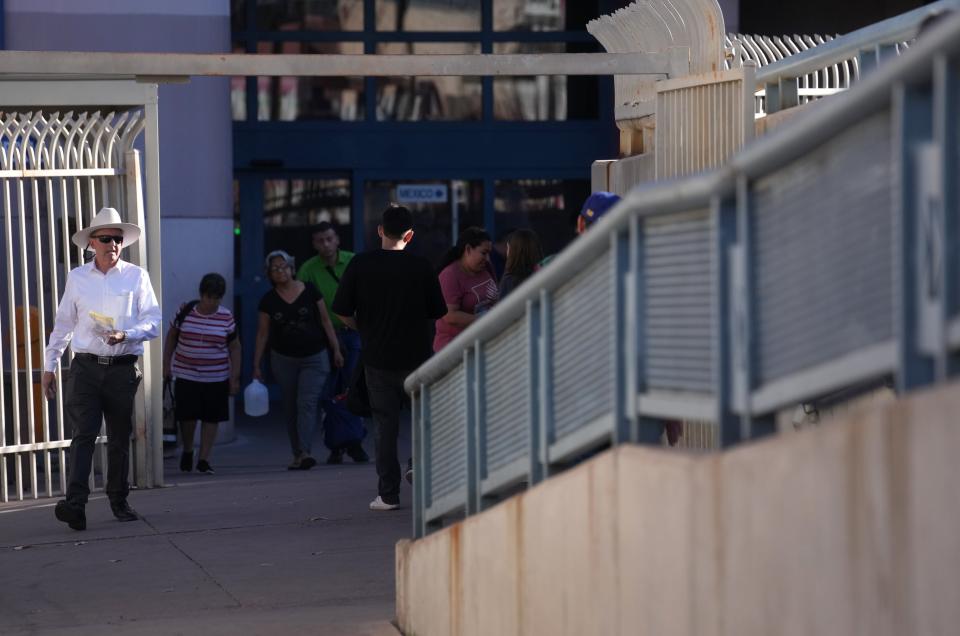
Here are the state’s ports of entry:
Nogales
Dennis DeConcini Port of Entry
Mariposa Port of Entry
Morley Pedestrian Gate
Douglas
Raul H. Castro Land Port of Entry
Douglas Commercial Land Port of Entry
San Luis
San Luis l
San Luis II
Lukeville
Naco
Sasabe
Is there an 'open border' with Mexico?
The narrative of the U.S.-Mexico border being “open” is largely subjective and dependent on who you ask. Nonetheless, the rhetoric of “open borders” may be contributing to a rise in Central American migration to the southern border.
Republican politicians, including former President Donald Trump, have criticized the Biden administration’s approach to the situation at the southern border as “open border policies” since President Joe Biden took office.

Proponents of the “open border” narrative in the past have pointed to Biden’s support of enforcing unauthorized border crossings as a civil offense instead of a criminal one during a Democratic presidential debate as evidence of open-border policies.
Biden’s decision to halt border wall construction on his first day in office in January also has contributed to the narrative of open borders. Still, the Biden administration has continuously closed border wall gaps along the Arizona-Mexico border and recently waived 26 federal laws in South Texas for new border wall construction.
A new poll by America’s Voice found that disinformation about “open borders” contributes to Central American migration to the U.S. The poll, released Sept. 26, found that more than one in four Central American respondents heard and approximately one in five believed rhetoric that the “border is open.”
Social media was the most used source of information about the border among respondents from ages 16-24, according to the poll. Of the young respondents, who are the ages most likely to consider migrating, 71% reported having heard U.S. officials or politicians say the border is open through social media.

The poll surveyed 600 people living in El Salvador, Guatemala, Honduras and Nicaragua in July.
The U.S.-Mexico border is also equipped with nearly 20,000 Border Patrol agents, surveillance towers, cameras and tethered blimps to patrol and protect the international boundary, according to 2021 CBP data.
Is there a 'border invasion' or border crisis?
Republican lawmakers and candidates have consistently described the situation at the southern border as an “invasion.” The rhetoric has led to harmful effects for migrants and Latinos in the U.S., advocates say.
More than half of Americans say that there’s an invasion at the southern border, according to an August 2022 NPR/Ipsos poll.
For the second time in U.S. history, annual migrant encounters along the Southwestern border eclipsed 2 million, according to unpublished Department of Homeland Security data obtained by CBS News. Fiscal year 2023, which ended in September, was only surpassed in annual migrant encounters by 2022.
The rise in migrant arrivals has strained local communities and federal agencies. Humanitarian organizations have scrambled to respond to the increase in order to prevent unsheltered migrant street releases across Arizona.
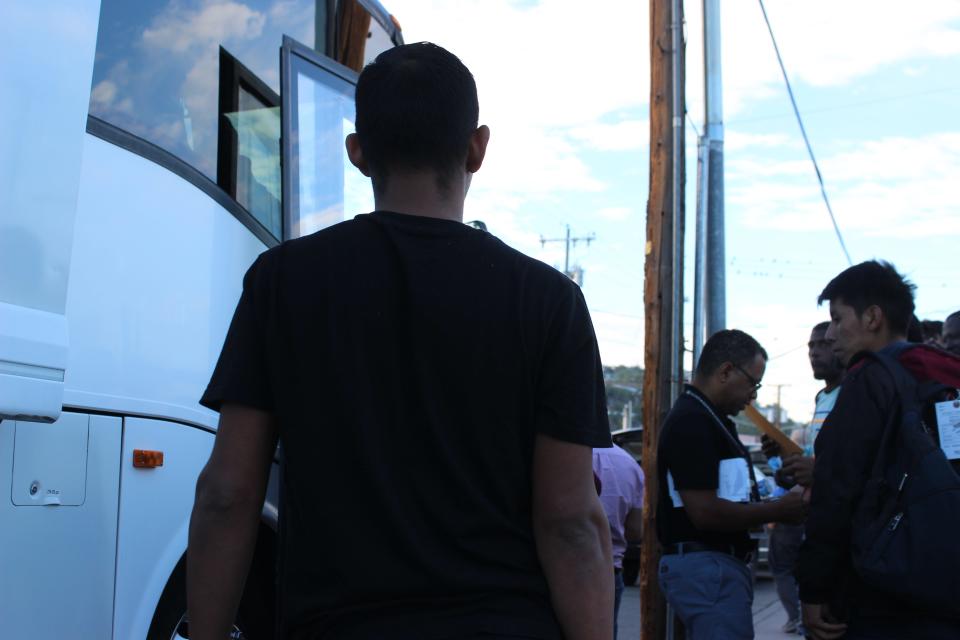
Trump has escalated his anti-immigrant rhetoric in recent weeks, accusing migrants of “poisoning the blood of our country.” The League of United Latin American Citizens has likened the language to that of “Adolf Hitler's Nazi regime.”
Kari Lake, the former TV anchor who recently launched her Senate bid, previously vowed to issue a “declaration of invasion” if she became Arizona’s governor. Lake lost her bid for governor but never conceded.
Texas Gov. Greg Abbott has continuously peddled invasion language as a justification for his actions along the Texas-Mexico border. Abbott cited an “invasion” as part of his reasoning for placing floating buoys in the Rio Grande to stop migrants from crossing into Texas.

Conversely, Trump and Republican presidential candidates Ron DeSantis and Vivek Ramaswamy have all pledged to invade Mexico with military force in order to combat drug cartels and the movement of fentanyl across the border.
The rhetoric of a Hispanic “invasion” of Texas was cited as part of the gunman’s motivation in the 2019 Walmart shooting in El Paso. The gunman killed 23 people and wounded dozens more in a racially motivated massacre that targeted Hispanic shoppers at the Walmart.
How are drugs smuggled into the U.S.?
The majority of drugs that are seized at the Arizona-Mexico border are intercepted at legal, official U.S. ports of entry.
Republican politicians and officials have falsely suggested in the past that the majority of the drugs coming into the country are being transported by migrants crossing the border without authorization in between ports of entry.
That’s incorrect.
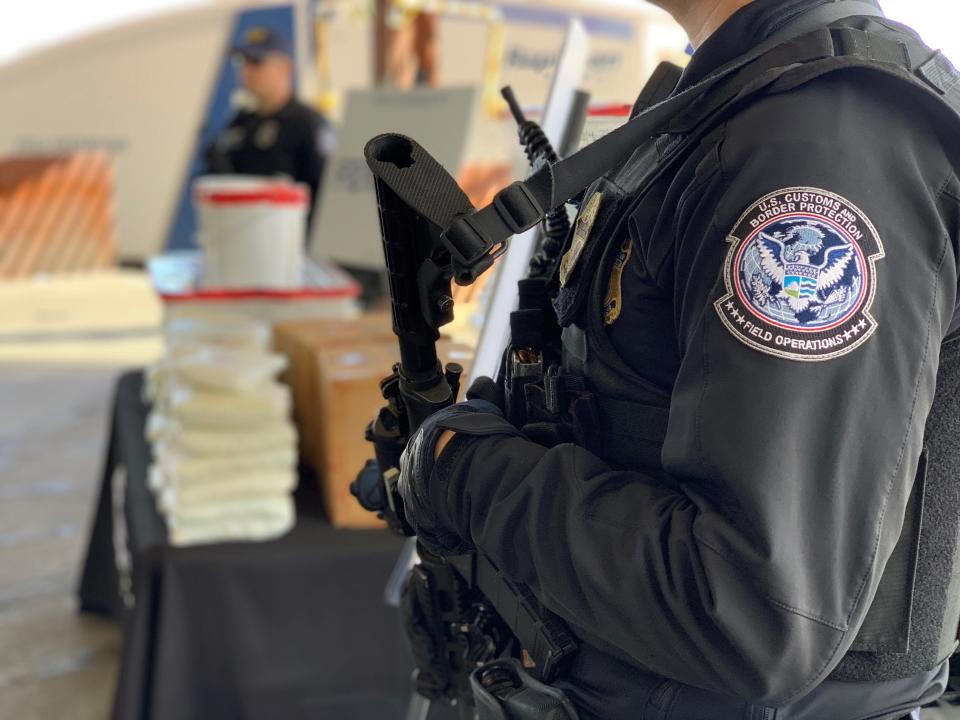
The vast majority of fentanyl is seized at ports of entry, with Border Patrol only intercepting a small percentage of the total in between ports and at interior vehicle checkpoints.
Over 89% of fentanyl has been intercepted at ports of entry thus far in fiscal year 2023, per CBP data. Additionally, more than half of the fentanyl seized at ports is being smuggled by U.S. citizens.
What happens to migrants when they are processed and allowed to stay in the US?
Migrants who are processed and temporarily allowed to stay in the country face a complicated web of logistical and bureaucratic obstacles that can last years.
The number of migrants who have entered the U.S. and are living, under either temporary or conditional status, has hit a record high.
At least 3.6 million migrants have come into the country under parole status in the past three years. Roughly 2.3 million are living in the U.S. under numerous U.S. Department of Homeland Security conditional programs, according to the Migration Policy Institute.
Additionally, at least 1.2 million people who came in are living with temporary parole status that has since lapsed.
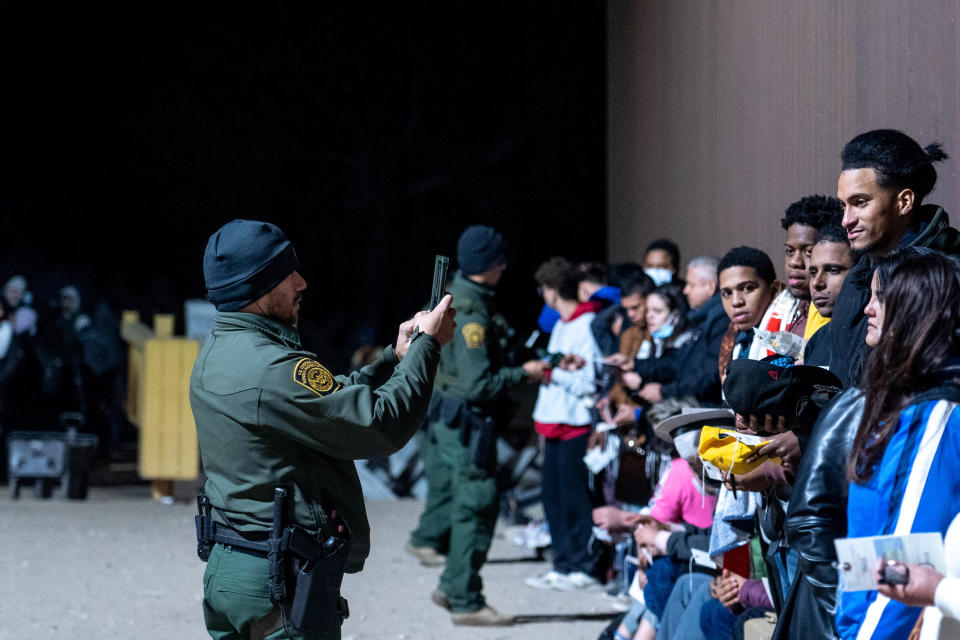
After migrants are screened and processed they are usually placed into removal proceedings and can be released with notices to check in with Immigration and Customs Enforcement when they arrive at their final destination. If released, they may receive a notice to appear in court in front of an immigration judge at a later date.
Arizona is often only a stop along the journey for many migrants arriving at the Arizona-Mexico border.
Migrants may be placed in long-term ICE detention centers while their case moves through the immigration courts. Migrants can be detained if officials determine that they pose a safety risk to the community or to ensure that the person will comply with the immigration proceedings, including deportation.
Once in the country, migrants generally have 12 months to file their completed asylum application, inciting a yearslong process.
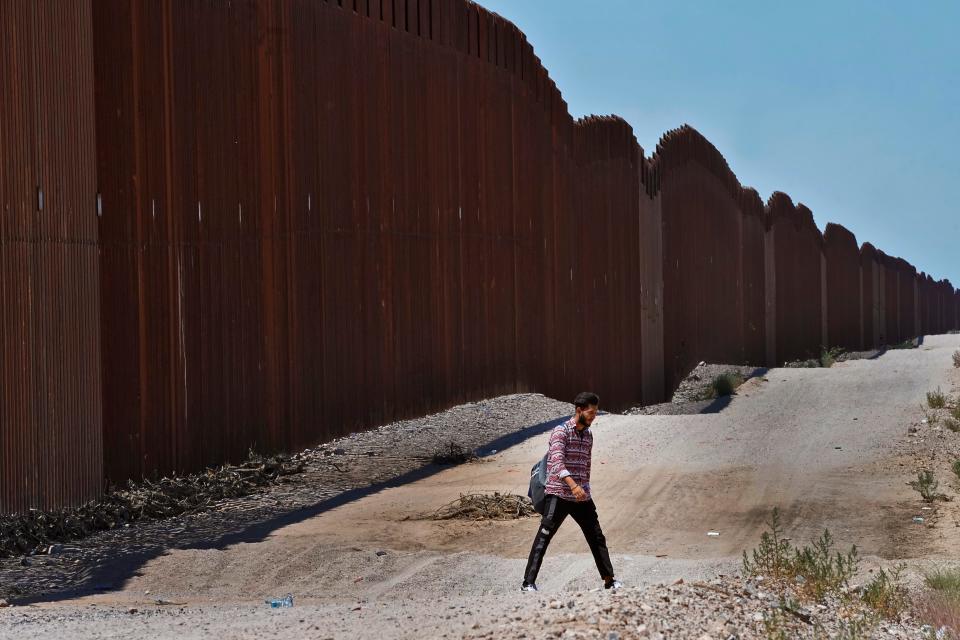
The average wait time for an asylum case before an immigration court is nearly four years, according to the Transactional Records Access Clearinghouse at Syracuse University. That’s the average amount of time it takes from when the case is filed until it receives a hearing.
There’s currently over 2.6 million pending cases in the immigration court backlog, per TRAC.
Migrants can apply for temporary employment authorization 150 days after filing their asylum application. They’re not eligible to legally work until then but many find jobs to work while undocumented.
If a judge determines that migrants are not eligible for asylum, then they are ordered deported. If asylum is granted, migrants can apply to become lawful permanent residents after at least one year in the country.
What’s Biden’s new asylum rule?
In May, the Biden administration formally issued a new rule that heavily restricted migrants’ access to asylum.
The rule aims to incentivize people to use lawful pathways to seek asylum, such as parole programs and the CBP One government application. People will be considered ineligible for asylum if they arrive in between ports of entry without having applied and been denied asylum in a country they already passed through.
It’s not sufficient to wait a long time for an asylum decision in a transit country, such as Mexico. Migrants must also be denied protection before moving forward. If people don’t use the lawful pathways or apply for prior protections, they will be considered ineligible for asylum, barring a few exceptions.

The rule has imperiled thousands of migrants along the U.S.-Mexico border and significantly narrowed their opportunities to seek asylum in the country, according to a July 2023 report from the humanitarian organization Human Rights First.
A federal judge blocked the rule in July but an appeals court subsequently allowed the rule to temporarily remain in place.
What has Biden done with the Arizona-Mexico border wall?
President Joe Biden previously promised not to add “another foot” to former President Donald Trump’s controversial border wall. On his first day in office in January 2021, Biden paused construction on the border wall along the U.S.-Mexico border and rescinded Trump’s 2-year-old national declaration of emergency.
Despite this, the Biden administration has been closing gaps in the Arizona-Mexico border wall since December 2021. Three gaps near Sasabe are in the process of being closed while four gaps near the Morelos Dam near Yuma have been sealed with temporary mesh fencing and mechanized bollard vehicle gates.
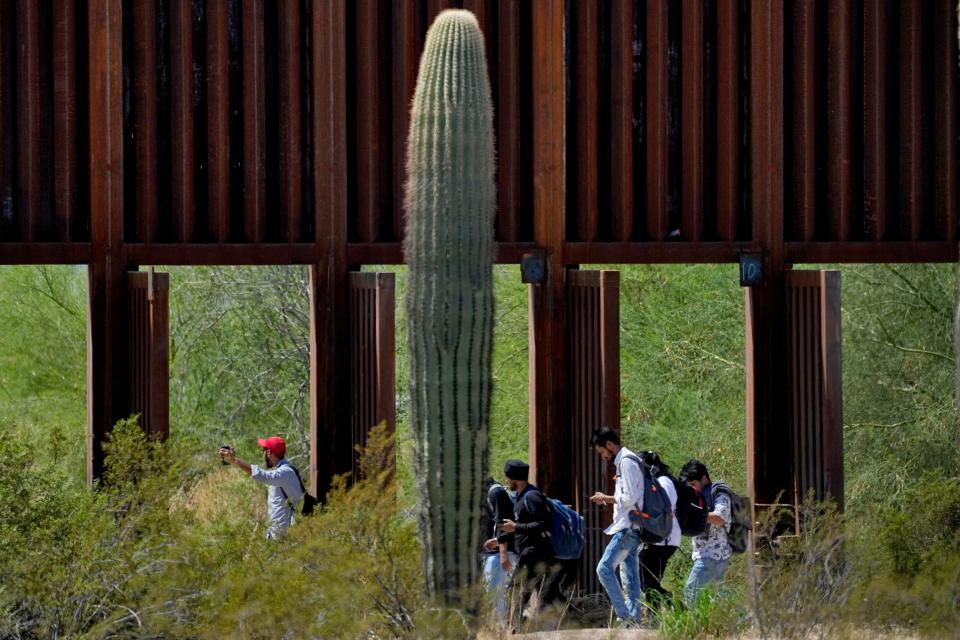
Construction to fill border wall gaps near Nogales began in May ahead of the expiration of the Title 42 health restriction. The unfinished portion of the border wall west of Nogales, known as the Mariposa Slab, was a frequent crossing point for migrants to surrender to Border Patrol agents.
In December 2021, DHS authorized CBP to move forward with “activities necessary to address life, safety, environmental and remediation requirements” related to the Defense Department's 284 border barrier projects.
When Biden was inaugurated in January 2021, about 458 miles of barrier had been completed with sites in various stages of construction along the U.S.-Mexico border, according to CBP. In Arizona, border wall fencing stretches nearly the length of the Arizona-Mexico border with about 226 miles of bollard fencing erected on federal lands in the state from 2017 to 2021.
What is the future of DACA?
In September, a federal judge in Texas ruled that the Deferred Action for Childhood Arrivals program, known as DACA, violates federal law. DACA was established through executive action in 2012 by former President Barack Obama.
The program protects people who were brought to the country as children from deportations and gives them a two-year work permit. The September ruling doesn’t require the government to take action against current recipients but would bar any approvals of new applications.
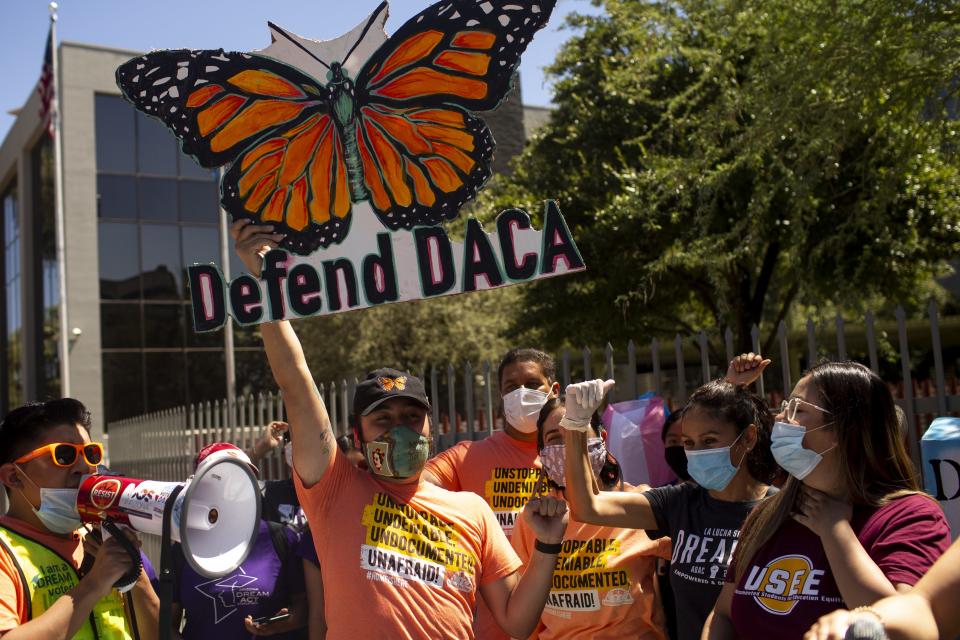
The future of DACA will likely be decided at the Supreme Court.
There are 578,680 active DACA recipients in the country as of March 2023, according to the Migration Policy Institute and U.S. Citizenship and Immigration Services. Arizona houses 21,890 recipients, the fourth largest DACA population in the U.S.
Have a news tip or story idea about the border and its communities? Contact the reporter at josecastaneda@arizonarepublic.com or connect with him on X, formerly known as Twitter, @joseicastaneda.
This article originally appeared on Arizona Republic: What to know about the U.S.-Mexico border before the 2024 election

